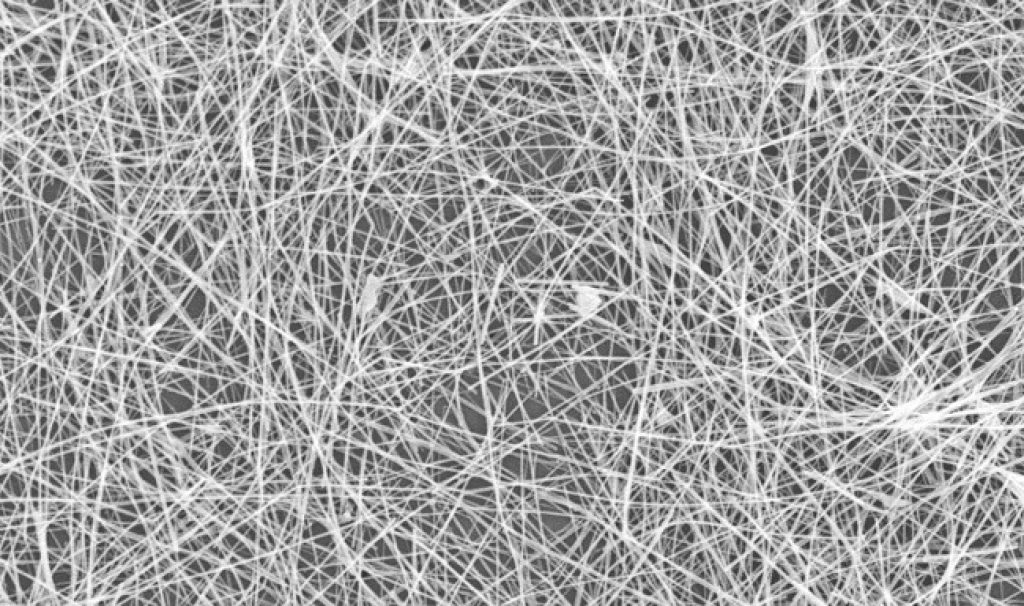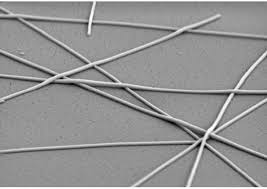- Oligophenylene vanillin nano wires section
A final summary of Oligophenylene vanillin nanowires ( description of all main factors)
Researcher and author: Dr. ( Afshin Rashid)
Note: Oligophenylene vanillin nanowires are used in making computer nanochips that use light instead of electricity to create high computing speed.
Making nano computer chips that use light instead of electricity to create high computing speed, in military, biological cases, to diagnose all types of cancer and other complex diseases just by taking a drop of blood, improving and modifying smart cards and; Nano military drones and birds were used.
Another nanostructure that has received many studies and researches today is Oligophenylene vanillin nanowires . In general, the wire is said to be a structure that is extended in one direction (longitudinal direction) and is very limited in the other two directions. A basic feature of these structures that have two outputs is electrical conductivity. By applying the electric potential difference at the two ends of these structures and along their length, electric charge transfer occurs. Making wires in nanometer dimensions is very interesting both from a technological and scientific point of view, because they show unusual properties in nanometer dimensions. The ratio of length to diameter of "oligophenylene vinyl" nanowiresOligophenylene vanillin is very high
Examples of the application of Oligophenylene vanillin nanowires are :
- Magnetic devices,
- Chemical and biological sensors,
Biological markers and internal connections in nanoelectronics, such as the connection of two aluminum superconducting pieces, which is made by silver nanowire .
Types of Oligophenylene vanillin nanowires :
Oligophenylene vanillin metallic nanowires : these nanostructures promise great efficiency in electronic components due to their special properties. Metal nanowires are one of the most attractive materials due to their unique properties that lead to their various applications . Nanowires can be used in computers and other computing devices. To achieve complex nanoscale electronic components, we need nanoscale wires. In addition, nanowires themselves can be the basis of electronic components such as memory.
The use of nanowires in nanobiological processors
Oligophenylene vanillin organic nanowires : These types of nanowires, as their name suggests, are obtained from organic compounds. In addition to metallic and semi-conducting materials, it is also possible to make nanowires from organic materials. Recently, a substance called "oligophenylene vinyline" has been considered for this purpose. The characteristics of these wires (such as conductivity, resistance, and thermal conductivity) depend on the structure of the monomer and its arrangement.
Conductive and semi-conductive Oligophenylene vanillin nanowires in the reproduction of nanochips: the chemical structure of these compounds creates interesting properties. The future of nanotechnology depends on the ability of researchers to achieve the techniques of organizing molecular components and achieving nanometer structures. By imitating nature , they achieve the organization of yeast proteins to produce conductive Oligophenylene vanillin nanowires . Organizing living components in nature is the best and oldest example of "bottom-up" construction, and therefore it can be used to understand and find methods for making electronic and micrometric devices. Until now, "top-down" construction techniques were used, which these techniquesIn the nanometer scale, it is often laborious and expensive, and the commercialization of nanotechnology requires easy and affordable methods, the best example of which is the nature around us; It is enough to open our eyes a little and look more carefully around us.
Oligophenylene vanillin silicon nanowires : this type of nanowires is non-toxic and does not harm cells. This type of nanowires has shown its greatest use in the field of medicine, such as detecting signs of cancer, stem cell growth, etc., which we will discuss further.
Application of Oligophenylene vanillin nanowires in diagnosis of diseases and structure (nano _ bio chip) : Oligophenylene vanillin nanowires are made from materials used in today's computer chips, such as silicon and gallium nitride. It can be used to diagnose diseases. You may ask what the computer tools have to do with the diagnosis of disease and the human body. The human body, like a computer, must have sensors that can warn external warning devices in case of problems and errors or the presence of toxic substances and try to fix it, such as A computer that gives an ERROR message if you run a wrong path in it or if a virus is found in it. To produce flexible and long nanowires, the variable lengths of these nanowires are between 1 to 100 nm or even per millimeter, and in terms of comparison, they are about a thousand times thinner than human hair. The length, flexibility and strength of these nanowires give it special characteristics. For example, being thin and long increases its surface. Therefore, these structures can be used in the design of very fast and sensitive sensors. These "oligophenylene vanillin " nanowires have the ability to produce invisible ultraviolet rays, the light enters the nanowire from one end and starts shining from the other end. Nanowires pass this light effectively without any loss. And On its way, if it encounters a pathogenic agent or toxic substance, the nanowire starts to glow and creates a very fast warning system, and this can detect the disease earlier and faster than any test.
The use of Oligophenylene vanillin nanowires in the construction of nano-robots in blood vessels to stimulate brain nerves: always transferring small transmitters into the vessels and directing them to the desired locations of platinum Oligophenylene vanillin nanowires whose thickness is 100 times thinner and finer than human hair. They send these "oligophenylene vanillin" nanowires into the blood vessels and direct them to the brain nerves with a small camera. This method is very useful to help find different causes and the occurrence of neurological diseases, including Parkinson's. In the past, it was used to find different causes. The emergence of heart and nerve diseases, they dissected the body at every point to find the cause of the disease, but today, with the development of nanotechnology, any device can be invented and invented in a delicate, thin and sensitive manner, and even it can be sent into the most delicate vessel. .
Conclusion :
Oligophenylene vanillin nanowires are used in making diagnostic nano biosensors. Nanowires made from materials used in today's computer chips such as silicon and gallium nitride can be used to diagnose diseases.
Researcher and author: Dr. ( Afshin Rashid)
Specialized doctorate in nano-microelectronics







